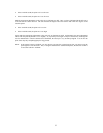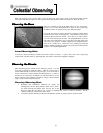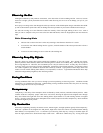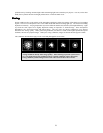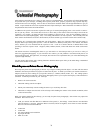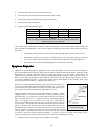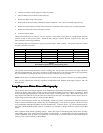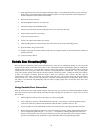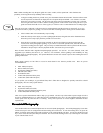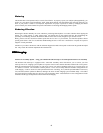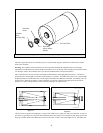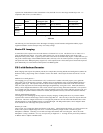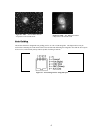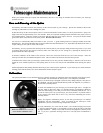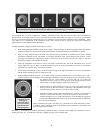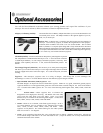
43
Note: When recording PEC only the photo guide rates (rates 1 and 2) will be operational. This eliminates the
possibility of moving the telescope suddenly while recording.
5. To begin recording the drive's periodic error, press the MENU button and select PEC from the Utilities menu.
Use the Up/Down scroll buttons to display the Record option and press ENTER. You will have 5 seconds
before the system starts to record. The first time each observing session that PEC record or play is selected,
the worm gear must rotate in order to mark its starting position. If the rotation of the worm gear moves your
guide star outside the field of view of the eyepiece, it will have to be re-centered before the recording begins.
Once the worm gear is indexed, it will not need to be positioned again until the telescope is turned-off. So, to give
yourself more time to prepare for guiding, it is best to restart PEC recording after the worm gear has found its index.
6. After 8 minutes PEC will automatically stop recording.
7. Point the telescope at the object you want to photograph and center the guide star on the illuminated cross
hairs and you are ready to play back the periodic error correction.
8. Once the drive's periodic error has been recorded, use the Playback function to begin playing back the
correction for future photographic guiding. If you want to re-record the periodic error, select Record and
repeat the recording processes again. The previously recorded information will be replaced with the current
information. Repeat steps 7 and 8 to playback the PEC corrections for your next object.
Does the PEC function make unguided astrophotography possible? Yes and no. For solar (filtered), lunar, and
piggyback (up to 200mm), the answer is yes. However, even with PEC, off-axis guiding is still mandatory for long
exposure, deep sky astrophotography. The optional Reducer/Corrector lens reduces exposure times making the task of
guiding a little easier.
When getting started, use fast films to record as much detail in the shortest possible time. Here are proven
recommendations:
• Ektar 1000 (color print)
• Konica 3200 (color print)
• Fujichrome 1600D (color slide)
• 3M 1000 (color slide)
• Scotchchrome 400
• T-Max 3200 (black and white print)
• T-Max 400 (black and white print)
As you perfect your technique, try specialized films, that is films that are designed or specially treated for celestial
photography. Here are some popular choices:
• Ektar 125 (color print)
• Fujichrome 100D (color slide)
• Tech Pan, gas hypered (black and white print)
• T-Max 400 (black and white print)
There is no exposure determination table to help you get started. The best way to determine exposure length is look at
previously published photos to see what film/exposure combinations were used. Or take unguided sample photos of
various parts of the sky while the drive is running. Always take exposures of various lengths to determine the best
exposure time.
T
TT
T
T
TT
T
e
ee
e
e
ee
e
r
rr
r
r
rr
r
r
rr
r
r
rr
r
e
ee
e
e
ee
e
s
ss
s
s
ss
s
t
tt
t
t
tt
t
r
rr
r
r
rr
r
i
ii
i
i
ii
i
a
aa
a
a
aa
a
l
ll
l
l
ll
l
P
PP
P
P
PP
P
h
hh
h
h
hh
h
o
oo
o
o
oo
o
t
tt
t
t
tt
t
o
oo
o
o
oo
o
g
gg
g
g
gg
g
r
rr
r
r
rr
r
a
aa
a
a
aa
a
p
pp
p
p
pp
p
h
hh
h
h
hh
h
y
yy
y
y
yy
y
Your NexStar makes an excellent telephoto lens for terrestrial (land) photography. Terrestrial photography is best done
will the telescope in Alt-Az configuration and the tracking drive turned off. To turn the tracking drive off, press the
MENU (9) button on the hand control and scroll down to the Tracking Mode sub menu. Use the Up and Down scroll
keys (10) to select the Off option and press ENTER. This will turn the tracking motors off, so that objects will remain
in your camera's field of view.
Hel
p
fu
l
Hin
t



